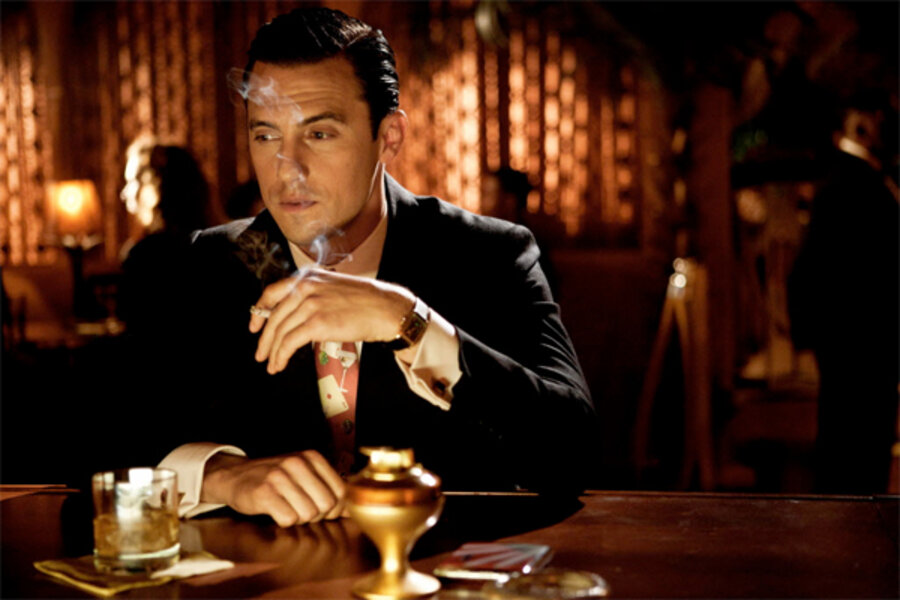'Mob City': Author of the series' source book John Buntin discusses organized crime in L.A.
Loading...
Quick: Name a mobster haven. New York City? Al Capone's Chicago? Tony Soprano's New Jersey? Sure. But the City of Angels deserves a place in the mix too.
Los Angeles was "Mob City" in the 1940s, as the title of a new TV miniseries puts it. The second pair of episodes of the TNT crime show air tonight, continuing to track the real-life era of Bugsy Siegel, Mickey Cohen, and a deeply corrupt LAPD.
"Mob City" is based on the 2010 book "L.A. Noir: The Struggle for the Soul of America's Most Seductive City" by John Buntin. I reached Buntin in Nashville, where he lives with his family, and asked him to describe how organized crime and corruption came to dominate the City of Angels.
Q: What made Los Angeles fertile ground for crime and public corruption?
A: L.A. was a dusty pueblo of 5,000 souls until the railroads connected it to the rest of the country in the 1880s. By the 1920s, it was home to 500,000 people and the largest city in the West.
It was an anonymous city, filled with newcomers. It lacked machine politics and ethnic and neighborhood loyalties weren't established. So politicians needed a lot of money to run for office since you had to spend money on media to reach people.
The anonymity, lack of connections, and the need to have a lot of money to fund political campaigns combined in a dangerous way.
Q: Was the interaction between criminals and the corruption establishment different in L.A. than back East?
A: People don't think about Los Angeles as a mob city like Chicago or New York, but the mob had a much bigger influence on L.A. than it did in those other cities.
In New York City, the police and judges were bought off, and that happened in parts of L.A., to be sure. But in L.A., the police weren't just bought off. They'd actually crack down on the competition.
The implication was that the police department was an enforcer. If you were in good standing with the powers that were, you'd get a heads-up when there might be a raid on your establishment. Or it might be that your competitor would find himself the target of the most zealous and effective law enforcement.
But L.A. got unruly and that's one of the reasons that Las Vegas exists. Bugsy Siegel got arrested on bookmaking charges and said L.A. was too sprawling to organize: You have to pay for every captain.
Q: How did this all play into perceptions of the city, which is both the pot of gold at the end of the rainbow and the source of endless disappointment?
A: L.A. was marketed to the country as this Eden at the end of the frontier, an Anglo-Saxon paradise and a bucolic anti-city full of white Protestants and affluent retirees seeking health, wealth and leisure.
People arrived in L.A. and realized that wasn't the reality. They noticed the divergence and it quickly went from being seen as this utopia to becoming a dystopia, with some people even thinking of L.A. as an evil place reenacting original sin.
Q: The era depicted in your book and "Mob City" – not to mention film noir up to the days of "L.A. Confidential" and beyond – continues to have plenty of cachet in our culture. What makes it pop?
A: It's fun, a stylish period when adults still dressed like adults. One of the great newspaperwomen of the era talked about how detectives in those days were really proud of their watches, their cufflinks. They all had these beefy hands with lots of rings on them so they could mess people up. And they had lots of hats.
But it was also a brutal period and there's fascination with the brutality and darker themes. When you seriously engage with these people and find yourself looking at real crime scenes as opposed to anesthetized images, it is shocking.
Q: How did violence affect everyday people?
A: It was part of a narrative of everyone's lives. People played the numbers, made bets with the neighborhood bookies in the days before the state lottery.
Criminals were celebrities. Newspapers had underworld columnists who raced to investigate and solve crimes. Every morning and every evening, you could open your newspaper to read about these stories, which were quite riveting.
Q: The LAPD developed its mixed reputation in the years you write about and the police leaders in your book directly influenced those who came later, like Chief Daryl Gates of the Rodney King era. What do you make of how things have changed and not changed since the 1940s?
A: This isn't a distinct period that began and ended. I'm originally from Mississippi and, to quote Faulkner, "The past is never dead. It’s not even past."
Randy Dotinga is a fan of film noir and noir fiction, and has written about them frequently for the Monitor. He recently interviewed the screenwriter behind "Mildred Pierce," asked crime fiction authors about their favorite noir books-turned-movies, and took a bus tour of James M. Cain's Los Angeles.







